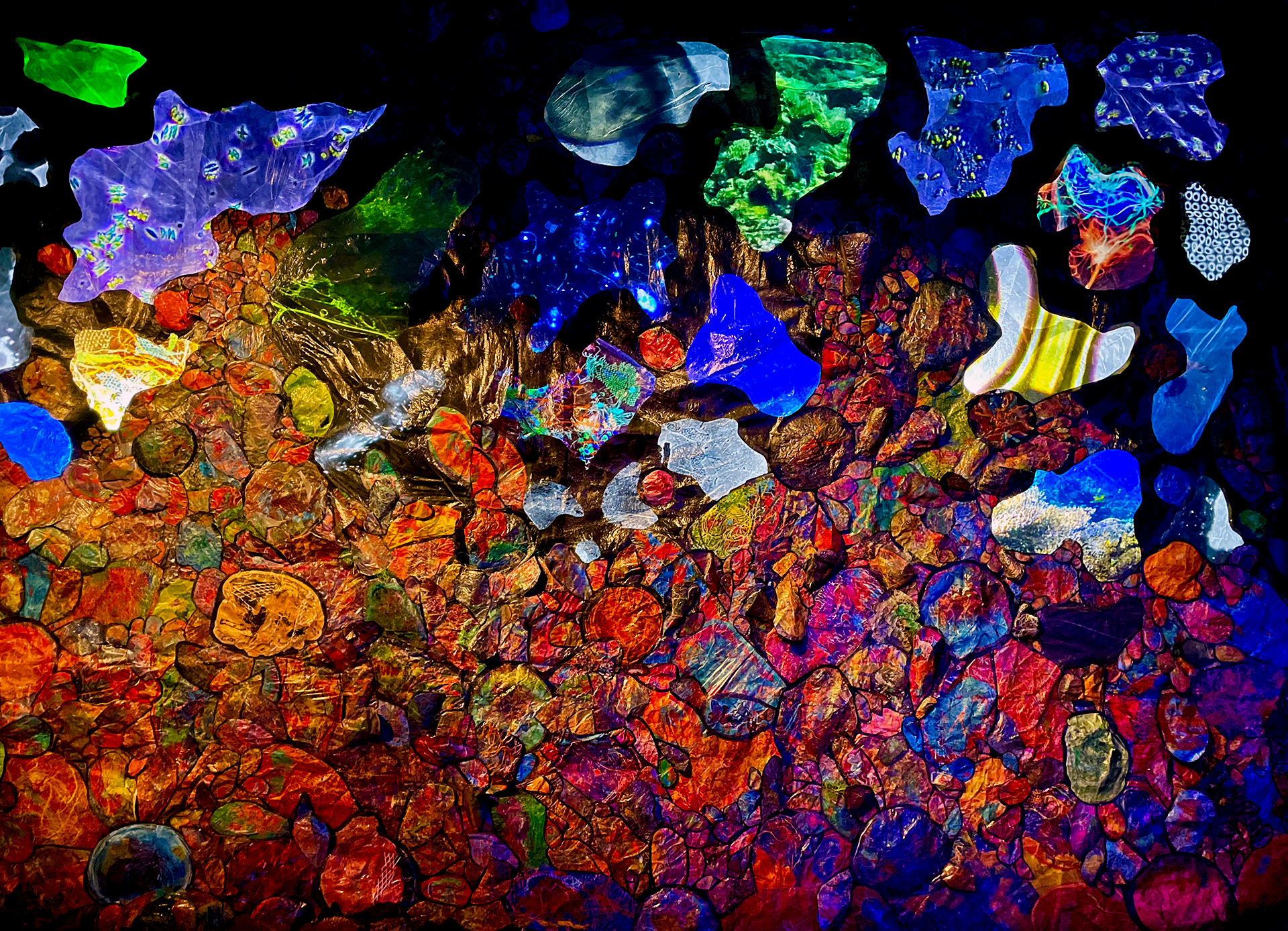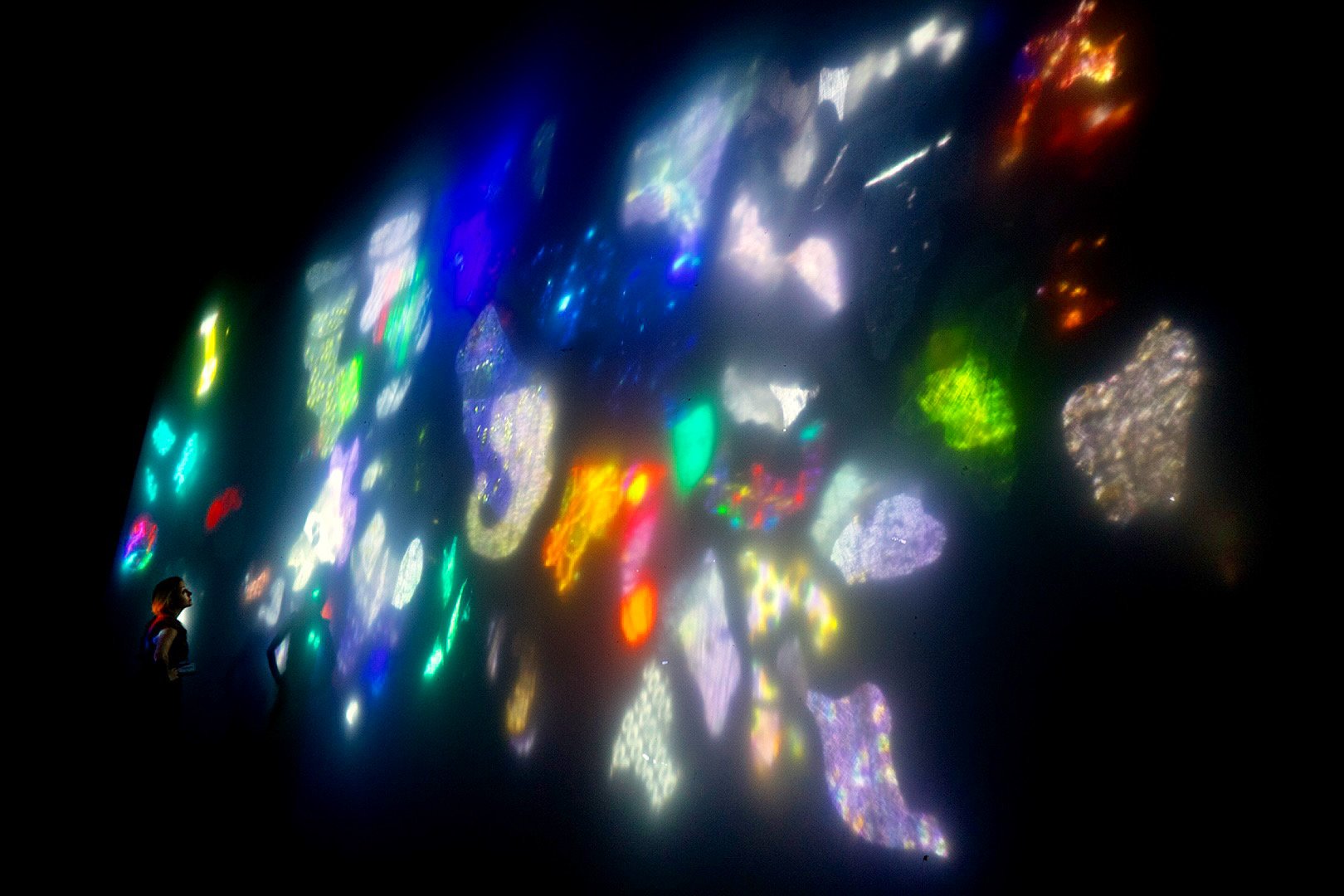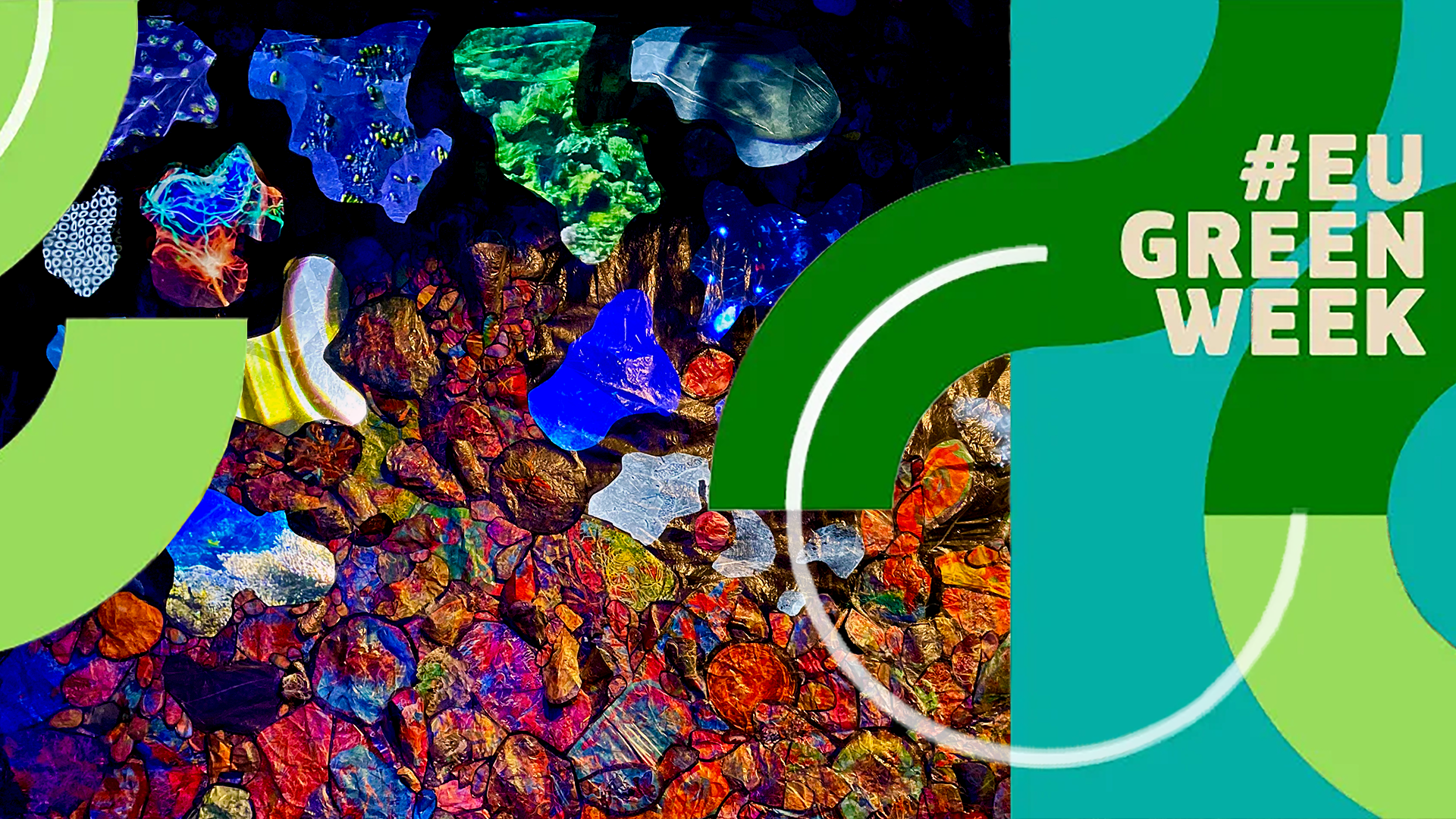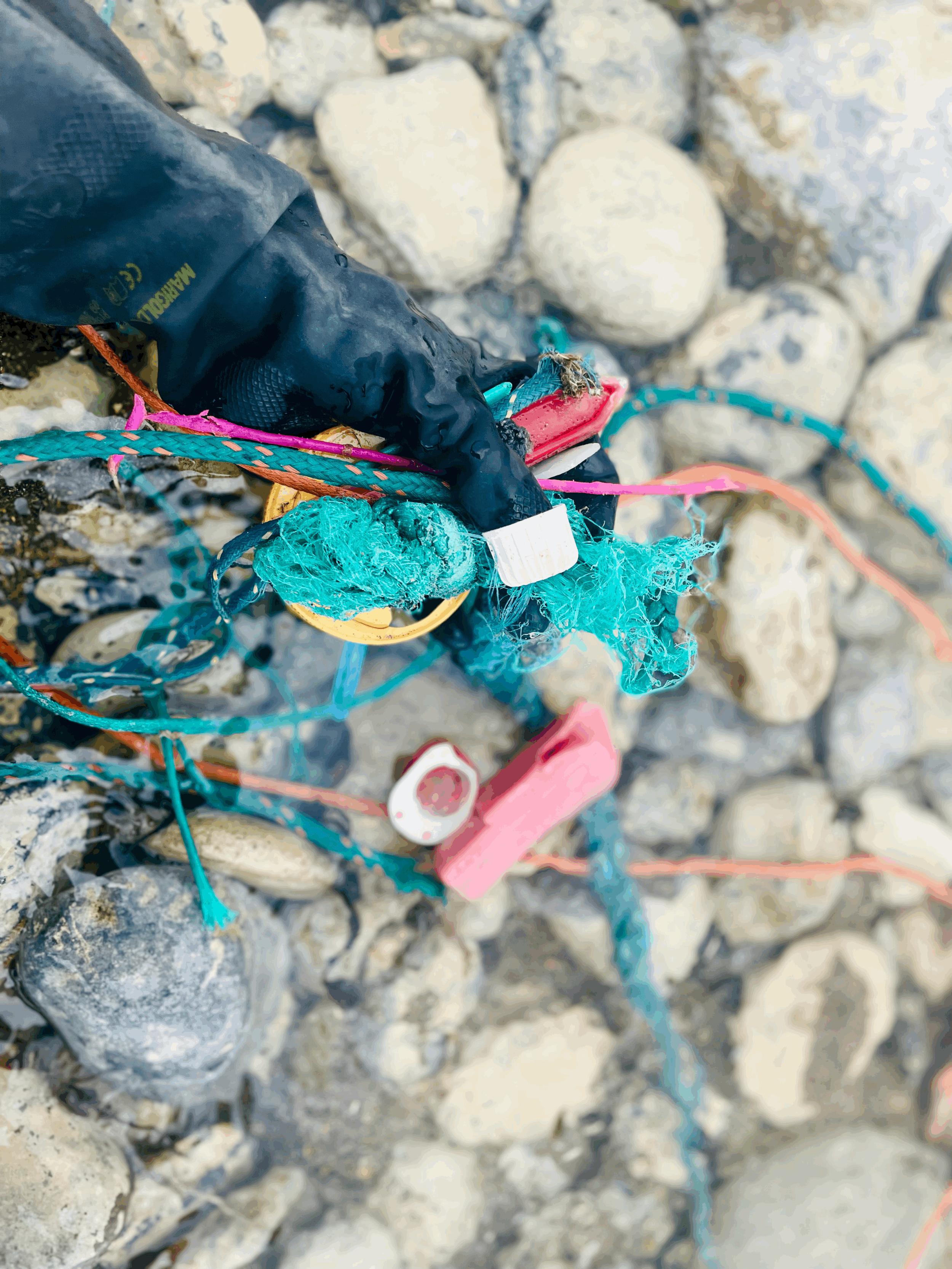JD Whitman
Plastic Magnitudes
A community-specific, immersive art installation illuminating research from the Joint Research Centre of the European Commission on plastic particulates and their potential threat to humans as they enter the food chain as microplastics and nanoplastics.
Inspired by the flow of plastic particulates through water supply systems and the digestive tracts of mussels, the installation juxtaposes visual imagery from plastic particulate research laboratories with images of environmental plastics.
The physical materials in the installation are constructed from the fusion of repurposed sheet plastic and marine plastic debris, collected during community clean-ups in Clare and Galway, Ireland. The plastic was fused together with community members during numerous SciArt workshops where participants talked through plastic pollution and policy, eco-anxiety, and solutions. A product of community engagement, the artwork offers a creative learning environment where viewers can positively experience, process, and discuss new perspectives on the puzzling life cycle of plastics.
Developed from 2022-2024 during the fourth edition of Resonances, the flagship initiative of the JRC SciArt Project, following the theme and curatorial concept of NaturArchy: Towards a Natural Contract.

































































































































































